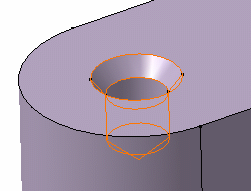Click Hole
 to create a hole in Part Design or Hole
to create a hole in Part Design or Hole
 to create a hole in Functional Modeling Part.
to create a hole in Functional Modeling Part.
Select the circular edge and upper face as shown.
The application now defines one distance constraint to position
the hole to be created. The hole will be concentric to the circular
edge.
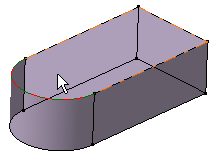
The Hole Definition dialog box appears
and the application previews the hole to be created. The Sketcher
grid is displayed to help you create the hole.
Whatever hole you choose, you need to specify the bottom
limit you want.
There is a variety of limits. By default, the application
previews a blind hole whose diameter is 10mm and depth 10mm.
Keep the Blind option.
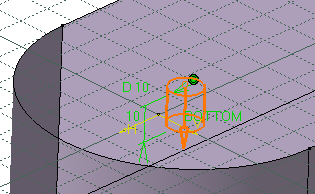
Now, define the hole you wish to create. Enter
24mm as the diameter value and 25mm as the depth value.
Set the Bottom option to V-Bottom
to create a pointed hole and enter 110 in the Angle box to
define the bottom shape.
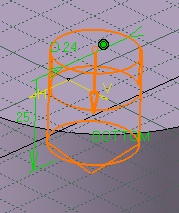
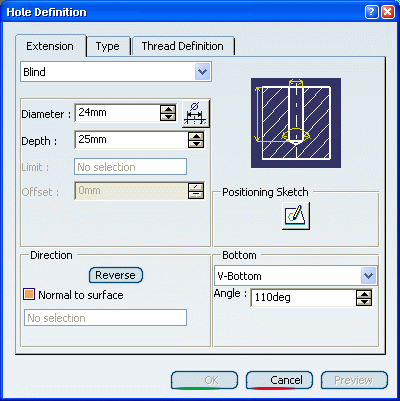
You are going to create a countersunk hole.
To create such a hole you need to choose two parameters among the following
options:
- Depth & Angle
- Depth & Diameter
- Angle & Diameter
Set the Angle & Diameter parameters
in the Mode box.
You can notice that the image assists you
in defining the desired hole.

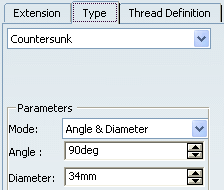
Enter 80 degrees in the Angle box.
The preview lets you see the new angle.
Enter 35 mm in the Diameter box.
The preview lets you see the new diameter.
Click OK.
The hole is created. The specification tree
indicates this creation. You can notice that the sketch used
to create the hole also appears under the hole's name. This
sketch consists of the point at the
center of the hole.
If working
in the Functional Modeling Part workbench, Hole.X
is added to the specification tree in the Solid Functional
Set.X node. By default, as a protected feature, holes
are in No Show mode. To see the red protected area
you have just created, set the Show mode.
